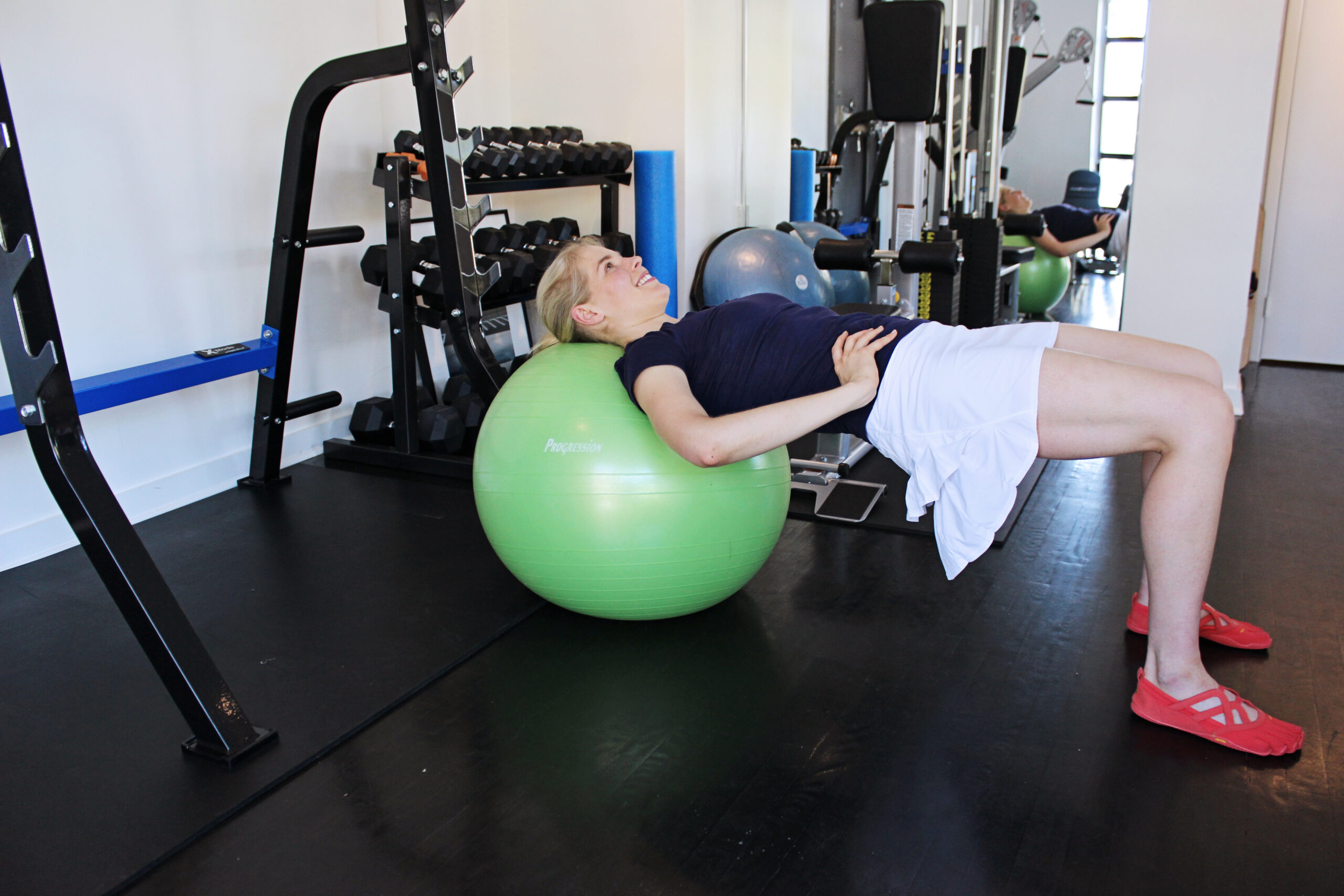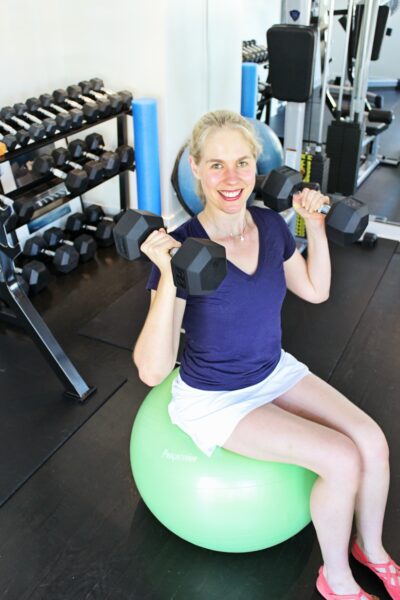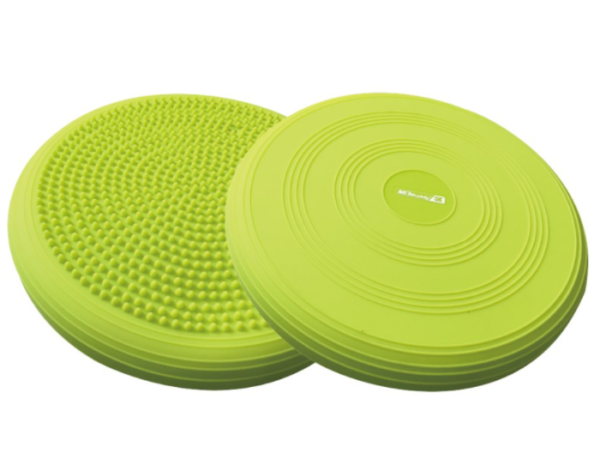Stability ball training

Welcome to the fifth installment in my “How to use X” series of blogs. In each blog I highlight a different piece of equipment — I outline the pros and cons, who might benefit, and how to best use it. I want readers to be savvy enough to know which equipment would be a good investment based on their needs and budget, and how to actually use the equipment once purchased — no one needs another coat rack.
The equipment of “the hour” is — you guessed it — the stability ball. My personal favourite aspect of the ball is that it helps me “find the joy,” lighten up, have some fun — and giggle. Taking training too seriously (the ‘no pain, no gain’ philosophy, etc.) can be a deterrent.
Who Should Invest?
Anyone who wants to improve their balance, core, and posture. Exercise enthusiasts looking to spice up traditional strength exercises. Individuals wanting an inexpensive, multi-use piece of equipment — the ball is everything from a chair alternative, to an exercise bench, to a balance tool, to a way to get low-impact cardio. All for the affordable cost of roughly $50.
Who Should Steer Clear?
Anyone whose goal is pure muscle size (i.e., to increase muscle hypertrophy). For size, do the bulk of your workouts on stable surfaces so that you can max out weights lifted safely. Yes, of course you can lift heavier weights on the ball, but the balance challenge will always be your limiting factor — not ideal if you want to max out your strength and hypertrophy gains. The stability ball is unstable and will thus challenge your balance and core — which is only ideal if stability, endurance, and functional strength are your goals.
A few ways to use the ball
1. Modify traditional strength exercises: Use the ball as a bench or stable ground alternative. Here are a few examples:

- Sit on the ball while doing upper-body exercises like lateral raises or shoulder presses.
Try increasing the difficulty of a plank by putting your toes on the ball and your hands on the floor.
Instead of lying on a bench, do upper-body exercises such as dumbbell bench presses with your head and shoulders on the ball.
Dumbbell bench press: Make sure your feet are flat on the floor, with your hips up and shoulders on the ball. Hold a free weight in each hand, with both arms straight above your chest. Bend your elbows toward the floor so that your shoulder and elbow form a roughly 90-degree angle. Repeat 10 to 15 times. Since the ball adds a significant balance challenge, consider starting with a lower weight than usual.
2. Add a fun dynamic/functional element.
Play sports? Add dynamic motion to your strength exercises. Balancing while controlling your motion will help your body learn to adapt to incoming stimuli — as needed in life and sports.
For example, instead of simply doing a bridge, try bridge rotations: Start with your head and shoulders on the ball, feet on the floor, hips up. Rotate your upper body to the right so your right shoulder is on the ball and your left shoulder is straight up in the air. Slowly control your body and rotate back to the starting position. Rotate side-to-side for 10 reps.

3. Sit on the ball when at your desk.
Excessive sitting (especially if you have poor body awareness) can result in bad posture, muscle imbalances, stiffness, and lack of circulation.
Sitting on a ball can help to improve posture and body awareness, especially if you are a stability ball newbie; the instability will challenge your balance and force you to become more body-aware. You will have to sit up, or risk falling. If you’re nervous, you can get a frame for the ball. If the aesthetic of the ball doesn’t jive with your work environment, try sitting on an inflatable cushion. Inflatable balance cushions offer many of the same benefits as the ball, but are more inconspicuous.
4. Bounce to get low-impact cardio.
Bouncing is fun, works the core, and (somewhat surprisingly) gets your heart rate up! Sit on the ball with your feet on the floor. Shoulders back. Core engaged. Start to lightly bounce. On the upward portion of the bounce, engage your pelvic floor muscles and keep your posture. To add variety and make it more of a challenge, bounce higher, add “jumping jack” legs, add arms, and/or bounce in a circle.
Don’t be discouraged if you feel silly – the instability of the ball can take some getting used to, but with practice, you will become Zen with the ball!
Curious about past blogs in the series? Past blogs outlined how to use the treadmill, bike, lifting parameters, and dumbbells. Happy training!
Originally published at FLAMANFITNESS












